
Renault Captur E-Tech Review

Introduction
Small SUVs are one of the fastest growing areas of the automotive market, and Renault’s Captur has always been at the forefront of this. When the first version of the Captur arrived in 2013, it stole plenty of customers from its worthy-but-dull rivals by being quite the looker; all swoopy curves and stylish appeal.
This is the second-generation Captur, introduced in 2020, and it continues that same approach. The looks have been further enhanced, extra equipment included and more interior space carved out. A plug-in hybrid model has been added to the range too, and it’s that specific model – the Captur E-Tech – that we’re looking at here. We’ve got a separate article on the petrol and diesel models.
Review Sections
Select's rating score* - 3.6 / 5
At a Glance
The Captur is Renault’s smallest SUV, sharing mechanical bits with the similarly-sized Clio hatchback. That makes it a rival for a wide range of cars, but the E-Tech plug-in hybrid narrows down the immediate competition dramatically. At the time of writing, competition was basically limited to the Kia Niro PHEV and the Mini Countryman S E All4. Mostly, if you want petrol and electric power together, with the ability to recharge the battery from the wall, you’ll need to look at something bigger.
It’s not just the plug-in hybrid model that has appeal though; it’s also a snazzy looker. Renault hopes that a much-improved interior with an eye-catching infotainment system will also win it some fans.
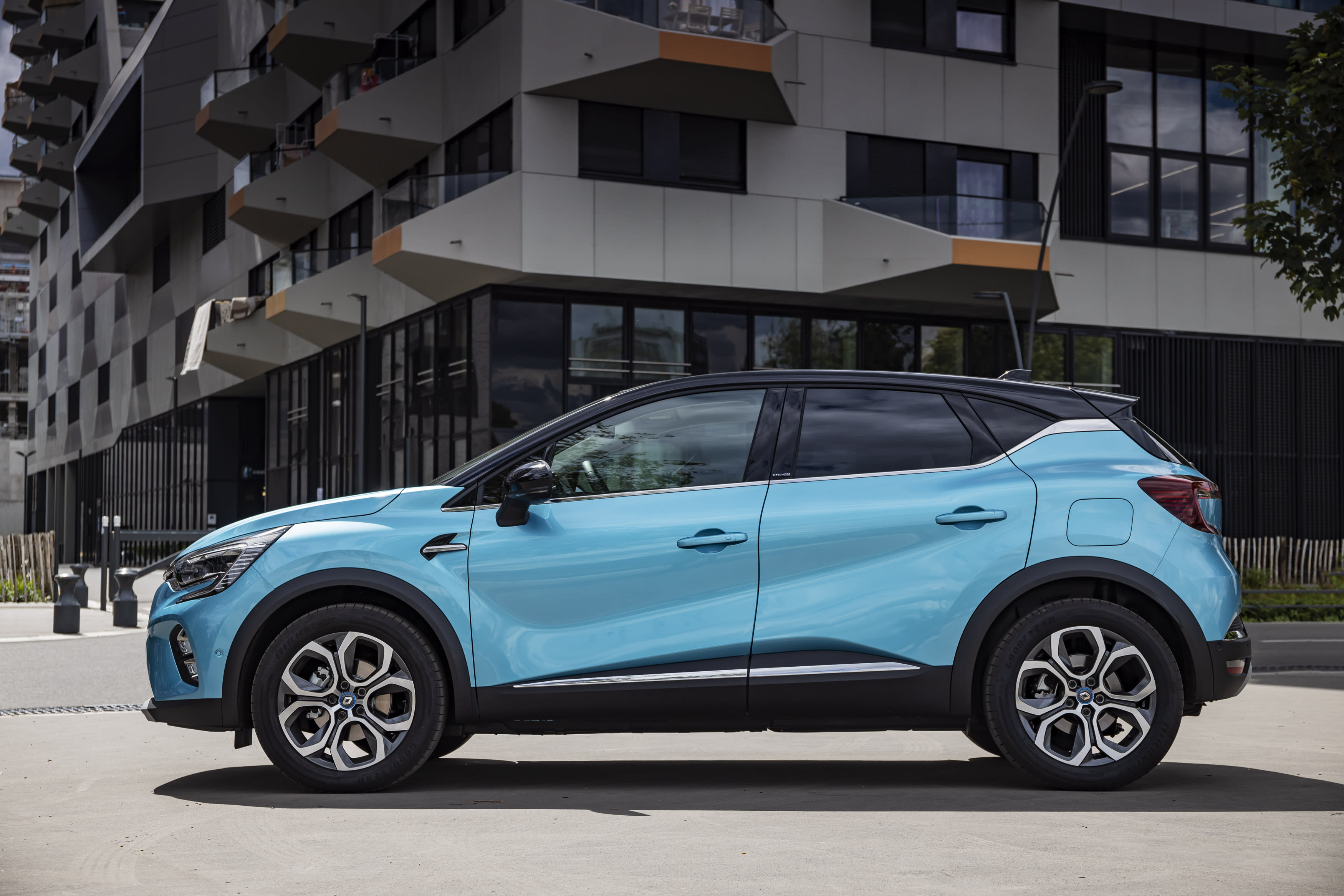
Key Features
PHEV capabilities aside, the Captur’s primary selling points are its looks. Whether or not it’s handsome is a subjective decision, but enough people think it is that the Renault is instantly elevated above some of its humdrum opposition, even those that are actually very good. It has the familiar small SUV proportions, with hatchback dimensions but raised-up ride height, and all models have alloy wheels and bright LED headlights. As with most of its rivals, don’t be fooled by this off-road derived styling – you can’t get a Captur with four-wheel drive, and it’s very much aimed at on-road driving.

Inside, it’s similarly stylish, with some unusual features including a portrait-orientated infotainment touchscreen. There’s a sliding rear bench to let you choose between extra luggage space or more legroom, and under the bonnet you can choose one of several different powertrains, including diesel and petrol.
Performance & Drive
Renault has tried to tread a line between sportiness and comfort with the way that the Captur drives, and it’s mostly successful. Customers won’t want something so stiff and agile that it clatters its way over bad road surfaces, but neither will they appreciate a ride that’s soft and supple if it then feels all wallowy through the corners. The Captur’s ride is a little on the bumpy side, especially at lower speeds, and that’s not helped by the extra weight that the extra electrical components bring over petrol and diesel models.
Cornering performance is similarly reasonable, with steering that’s on the light side. This doesn’t do much to make it feel agile, but it’s great for manoeuvring around town and never feels less than confident on country roads. Wind and road noise is on the high side at motorway speeds.
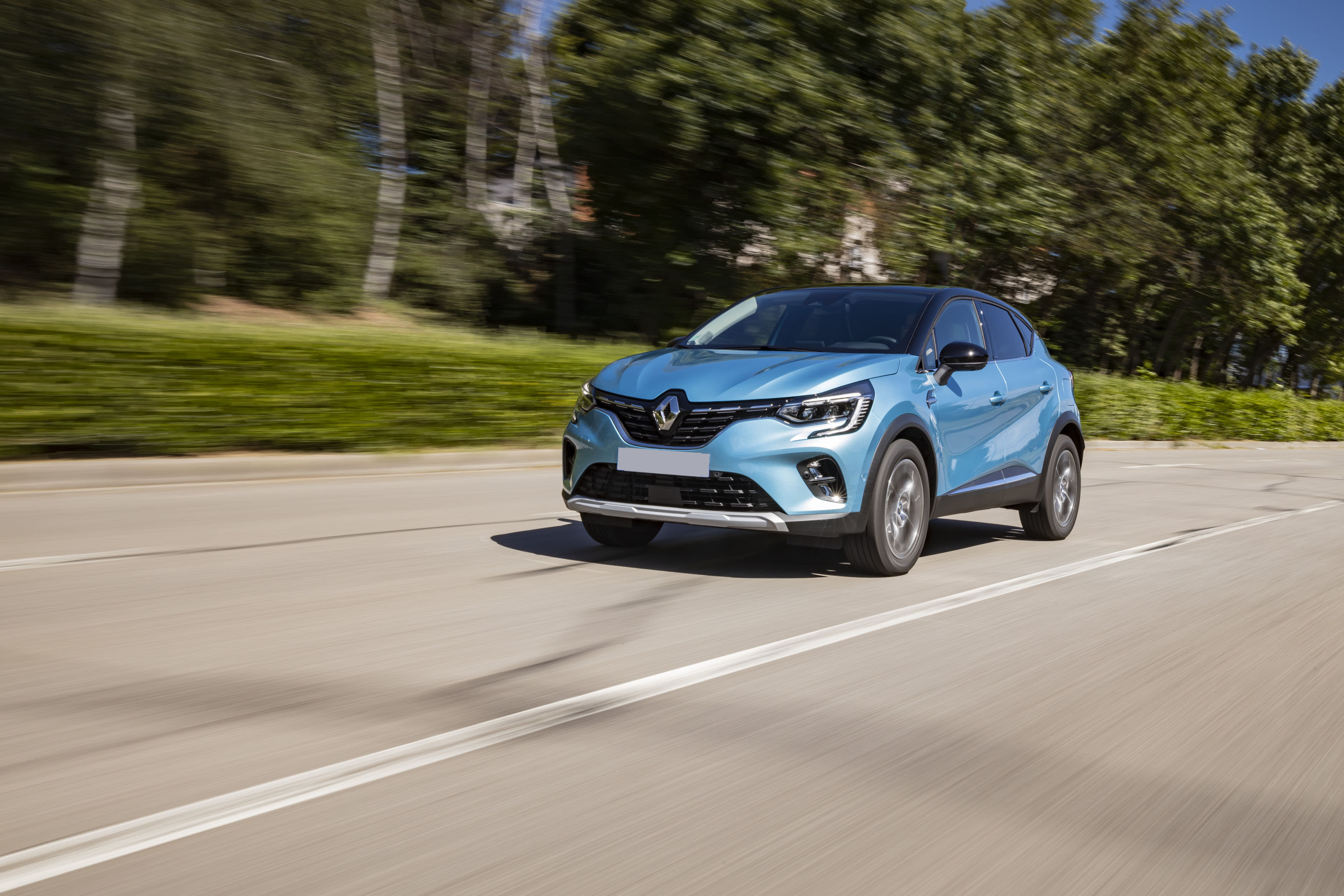
What really makes the Captur feel sprightly is the electrification. Electric motors give you all the oomph at once, rather than having to weight for the engine’s revs to build, and that means instant go when you press the accelerator. Around town it feels great, with lots of grunt whenever you need it. A fully charged battery promises 30 miles of electric-only driving, which we’ve found equates to around 23-25 in the real world. For a lot of people, that means most journeys can be completed without needing to use the petrol engine at all.
That motor, by the way, is a four-cylinder, 1.6-litre unit attached to a six-speed automatic gearbox. The car’s software will decide when it needs to kick in, either to provide extra grunt or when the battery’s getting low. The grunt is considerable – combined, the engine and electric motor make 158bhp – although the gearbox can be very hesitant, and will sometimes hold a high gear for far too long. Mostly though, the transition between electric and petrol power is pretty seamless.
You can tell the Captur to recharge the battery from the engine while you’re driving. This will obviously use more fuel, but it can be very handy if, for example, your journey will end in an urban environment where emissions-free driving would be useful, and you want to make sure there’s some electricity left. You can also tell it to run in pure electric (EV) mode, in which case it’ll leave the petrol engine alone unless you run out of juice.
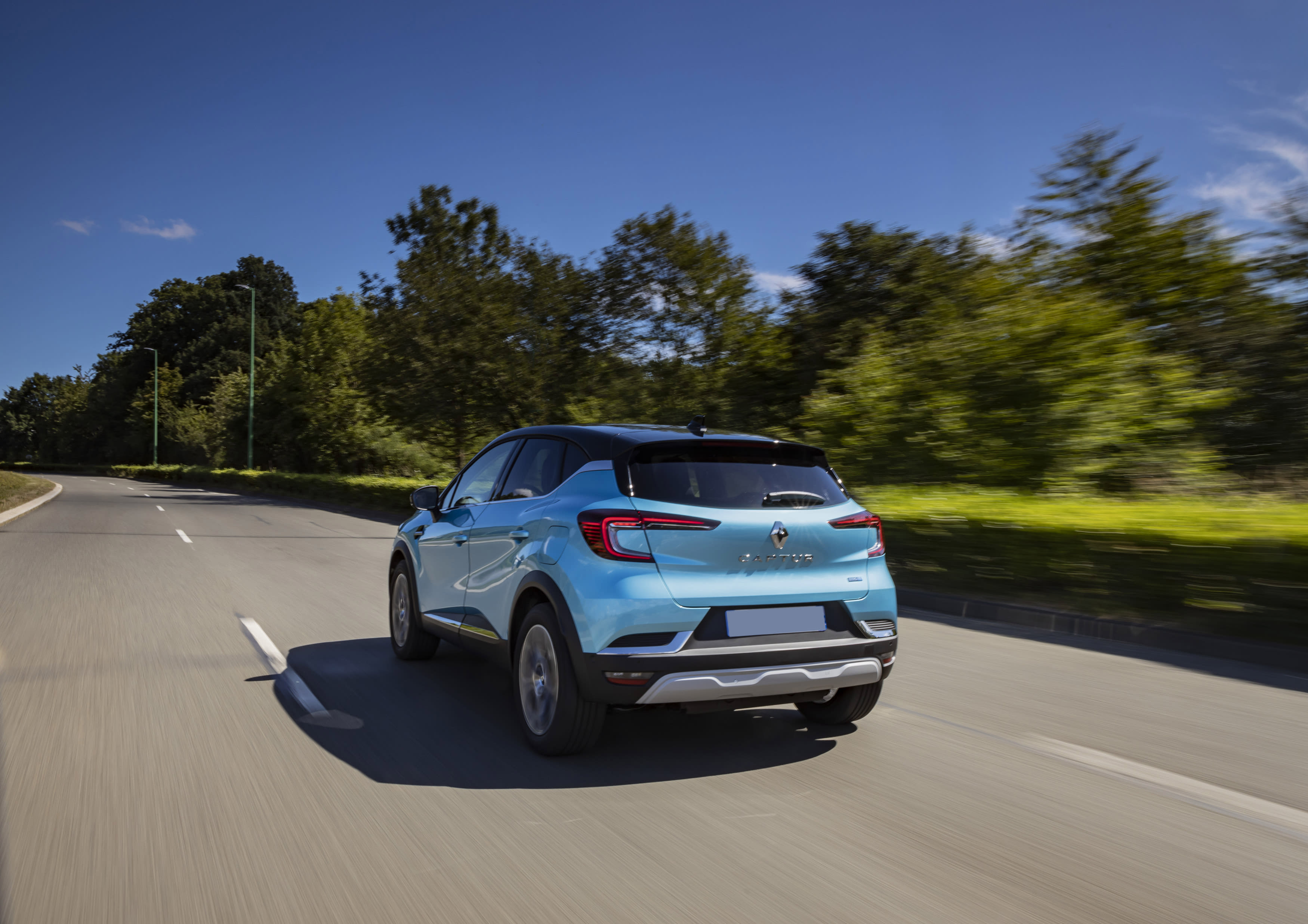
Overall, the Captur feels a step behind the best-handling cars of this type, namely the Skoda Kamiq, VW T-Roc and Ford Puma, but the responsive powertrain goes some way to making up for that. That said, the Kia and Mini both have similar levels of zippy appeal.
Running costs
When it comes to monthly leasing costs, the Captur E-Tech is quite a bit pricier than the rest of the Captur range, reflecting high trim specifications and all that extra tech. But the starting price is also substantially dearer than the Kia Niro PHEV and Mini Countryman PHEV too, although they have a broader range of trim options. At the time of writing you could get a larger Citroen C5 Aircross E-Tech, which has similar tech but more power and much more space, for not much more per month. However, it is cheaper than Peugeot’s (also larger) 3008 PHEV.
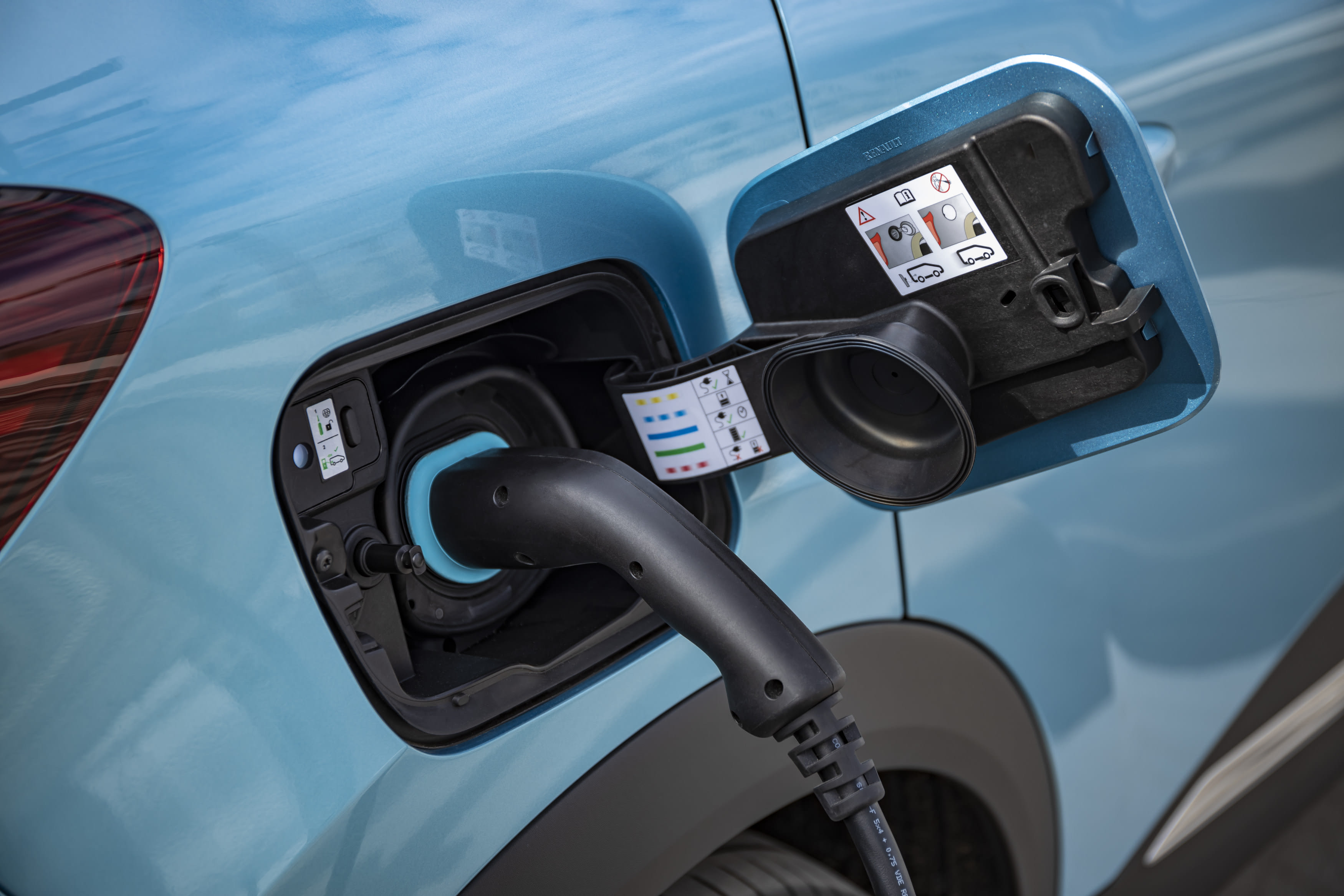
When it comes to fuel economy, the official figure (up to 188mpg) is almost meaningless, as so much will depend on how you use the Captur. Keep the battery charged whenever you can, and only do short journeys, and you’ll reap the financial rewards, especially if you charge it overnight on an off-peak tariff. However, if you do long commutes or motorway journeys, you’ll empty the battery fast and then be using petrol to carry empty electrical equipment about.
Insurance groups are between 13 and 15 of 50, depending on model, so pretty affordable and comparable to the petrol and diesel models.
Emissions
The plug-in hybrid E-Tech model is the obvious choice of the Captur range for company car buyers. Low official CO2 emissions mean a benefit in kind company car tax bracket of just 11% (2021/22).
Interior
Renault has embraced the SUV philosophy inside the Captur, with a high, commanding driving position. The design is quirky, with a portrait infotainment touchscreen on higher-spec models and a raised section between the front seats, housing the gearstick and some storage trays. Build quality isn’t bad, with plenty of soft-touch materials on show, especially on higher trim levels. Some of the harder plastics don’t feel particularly premium when compared to the Skoda Kamiq or VW T-Roc. You can spec Colour Packs on your car, which can result in some very bright trim sections. It’s certainly not boring, and overall a very nice place to sit.

Technology
The Captur E-Tech has a touchscreen infotainment system that features Apple CarPlay and Android Auto, meaning you can plug your smartphone in and use the various apps through the screen. It’s not the quickest system to use, and it can be a bit fiddly to change settings using the touchscreen while on the move, but there are far worse systems out there. DAB and Bluetooth are also included.

The screen measures 9.3 inches in portrait orientation, and you also get a 7.0-inch driver information display in place of regular dials. This shows driving information like speed and fuel economy, and can be configured to show the information you most want on hand. You can also specify powertrain information, showing you when you’re using electricity or petrol power (or both) and keeping track of overall range and electric-only range.
Practicality & Boot Space
The Captur isn’t a big car, but there’s a reasonable amount of space inside it if you need to carry passengers and/or luggage. Space in the back isn’t huge for adults, but those under six foot shouldn’t have too many head or leg room issues. That said, three adults will be tight. If your passengers are particularly long-limbed, you can slide the rear bench backwards for extra legroom. If you still need more space though, check out Skoda’s Kamiq.
The boot space in the Captur E-Tech is compromised by the need to keep the charging cables under the false floor, and to house various electrical components, but it’s still not a bad size. The rear seats fold down in a 60/40 split to house larger objects.
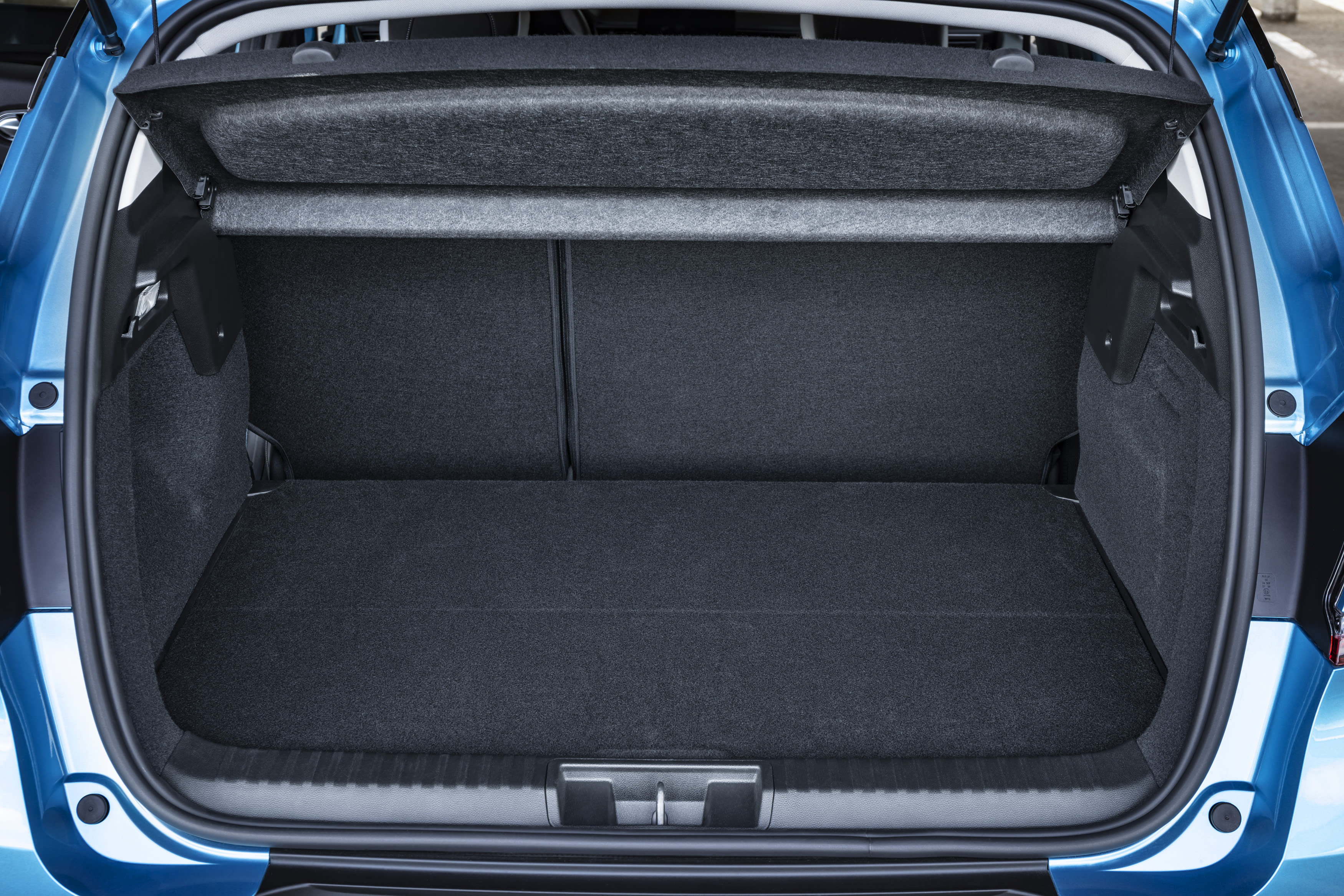
There are plenty of storage spaces around the cabin, with two storage trays between the front seats as well as a cubby hole under the armrest, as well as door pockets for odds and ends.
Safety
The Captur was tested by independent safety organisation Euro NCAP in 2019 and scored the maximum five stars. All models get automatic emergency braking systems as standard, and it’ll detect pedestrians and cyclists as well as other vehicles. Fail to react to an impending crash, and the system will intervene. A lane keeping assistance system is also standard. Higher-spec models include a blind spot warning system.
All models get front, side and head airbags as well as Isofix child seat mounting points on the front passenger seat and outer rear seats.
Options
The Captur E-Tech doesn’t have such a wide choice of trim levels as the petrol or diesel models, and it starts with the normally top-spec S Edition. This does mean that you get plenty of included equipment, including 17-inch alloy wheels, signature LED daytime running lights and an automatic high beam function. There are front and rear parking sensors and a rear-view camera, as well as a wireless phone charger.

The E-Tech plug-in hybrid model also comes in E-Tech Launch Edition trim, which has Arctic White paint with a Diamond Black roof, 18-inch alloy wheels and grey interior upholstery with blue stitching.
Options are generally few, but they include larger alloy wheels and various paint colours, heated front seats and a hand-free parking system.
Rival Cars
The list of small SUVs on today’s market is as long as your arm, with an offering from just about every major manufacturer. However, there are far fewer that offer a plug-in hybrid system (although that will likely change in the coming months and years). At the time of writing, the main alternatives for the Captur E-Tech look like Kia’s Niro PHEV and the Mini Countryman S E All4. Neither, we’d suggest, have the visual appeal of the Renault, although the Mini is zippier to drive and the Kia has a bit more space.
If you’re looking at other, non-PHEV small SUVs that trade on quirky looks, then you can’t ignore the Nissan Juke, Peugeot 2008 and Citroen C3 Aircross, all of which have plenty to recommend about them. Volkswagen offers the T-Roc and the slightly smaller T-Cross(the former based on the Golf, the latter on the Polo).

The Skoda Kamiq is one of the best small SUVs on the market, with plenty of space, great attention to detail in terms of features and some great engines, and it’s good value for money too. That would be the first place we’d recommend looking if you’re starting your small SUV search, along with Ford’s latest Puma, which is also a splendid all-rounder. Kia’s Stonic and the Seat Arona are also worth checking out if you want some zing to the driving experience.
If you want something a bit more upmarket then you should look at the Mercedes-Benz GLA, Audi Q2 and BMW X1.
Verdict & Next Steps
As a small, plug-in SUV. the Captur E-Tech has cornered what Renault reckons will be a growing market very soon. Right now it has precious few immediate rivals, but that could well change before long. For now, it does a good all-round job, with stylish looks and a punchy powertrain that could save you huge amounts on fuel if you use it correctly. It is quite pricey though, and the few other small PHEVs on the market can be leased for less each month. We’d recommend you check them out, but you may decide that the charm of the Captur is worth paying a bit extra for.
Where to next?
View latest Renault Captur e-Tech leasing deals- guide price from £330.18 per month inc VAT**
Looking for a great deal? Check out our incredible range of car lease deals
New SUV? Read our latest Car Reviews and find the right model for you
Want to know more about leasing? Take a look at our comprehensive Leasing Guides
Interested in everything motoring? Why not catch up on all the latest Car Leasing News.
*Score based on Select’s unique meta score analysis, taking into account the UK’s top five leading independent car website reviews of the Renault Captur e-Tech
**Correct as of 16/04/2021. Based on 9 months initial payment, 5,000 miles over a 48 month lease. Initial payment equivalent to 9 monthly payments or £2971.65 Ts and Cs apply. Credit is subject to status.
.jpg)


















